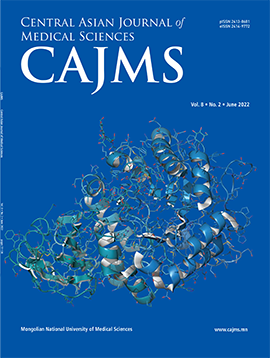The Effectiveness of Long-Term Rehabilitation Treatment After Stroke
DOI:
https://doi.org/10.24079/cajms.2020.09.006Keywords:
Stroke Rehabilitation, Activities of Daily Living, Patient Care, MongoliaAbstract
Objectives: Stroke is the leading cause of long-term disability. Therefore, we studied the effects of comprehensive long-term rehabilitation after stroke in improving the quality of life. Methods: Participants were compared in an experimental intervention model, with 120 control subjects, which received conventional short-stay inpatient hospitalization rehab, with 105 study subjects who received comprehensive rehabilitation program using the Guidelines for Adult Stroke Rehabilitation and Recovery from the American Heart Association/American Stroke Association starting in the hospital and extending for 6 months. The effects of rehabilitation were assessed Modified Rankin Scale (mRS), Functional Independence Measure (FIM), Barthel Index (BI) methods at admission, discharge, and 3 and 6 months after discharge. Results: There was no significant difference in the NIHSS, mRS, BI, and FIM scores between study and control patients at admission (p > 0.05). For the mRS, BI, and FIM scores, there was a significant interaction between treatment and time, indicating that the scores improved more rapidly for patients in the study group than the control group over the six-month study period (p < 0.001). A significant improvement in the scores with time was observed in the study and control groups at each time interval (p < 0.001). However, by 3 months after discharge the mRS, BI, and FIM scores of the study group were significantly better than the control group and the gap widened at 6 months, indicating further improvement. Conclusions: We found that providing prolonged by a multidisciplinary rehabilitation team results in higher functional independence and improvements in daily living activities.
Downloads
339
Downloads
Published
How to Cite
Issue
Section
License
Copyright (c) 2020 Mongolian National University of Medical Sciences

This work is licensed under a Creative Commons Attribution-NonCommercial 4.0 International License.




